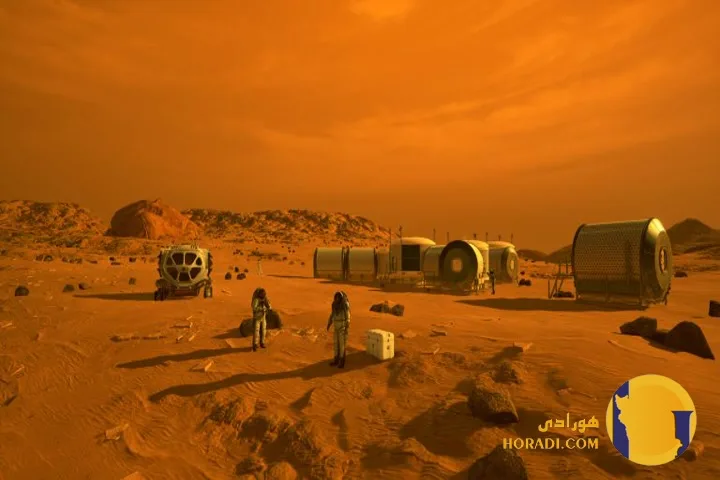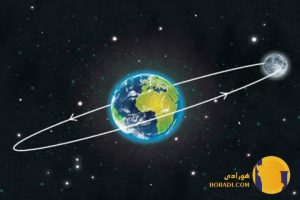
NASA’s New Mission Explained
NASA’s latest mission has captured the attention of scientists, space enthusiasts, and the public worldwide. Designed to push the boundaries of space exploration and expand our understanding of the cosmos, the mission represents a culmination of years of research, planning, and engineering. It aims not only to achieve its stated scientific goals but also to open new frontiers in technology, planetary science, and human exploration.NASA’s New Mission Explained
The mission’s primary objective is to explore a previously unvisited region of our solar system, gather unprecedented data, and pave the way for future exploration projects. This initiative is part of NASA’s long-term vision of deep-space exploration, including preparation for crewed missions to Mars and beyond.
NASA’s new mission marks a turning point in space exploration
This mission is seen as a critical step in redefining humanity’s place in the universe. With a blend of advanced robotics, autonomous navigation, and cutting-edge communication systems, NASA is testing capabilities that will be essential for the next generation of deep-space missions. The agency has described the mission as “transformational,” both in terms of scientific returns and the way we approach space travel.
It also serves as a symbol of international cooperation, with contributions from multiple space agencies around the world. By pooling resources and expertise, NASA is ensuring that the mission benefits from global innovation and shared goals.
Mission objectives focus on planetary science and technology innovation
The primary scientific goals include studying planetary geology, analyzing surface compositions, and investigating signs of past or present water sources. For planets and moons with atmospheres, the mission will analyze atmospheric composition and seasonal changes, providing insights into climate systems beyond Earth.
Technology objectives are equally ambitious. NASA aims to test new landing systems, energy generation methods, and autonomous navigation software. These advancements could be crucial for future manned missions, as they would increase safety, efficiency, and adaptability in unpredictable environments.
NASA’s new mission involves unprecedented engineering challenges
Designing a spacecraft capable of surviving the mission’s harsh conditions has required innovative thinking. Engineers have developed new heat-resistant materials, improved radiation shielding, and lightweight yet durable structures. These improvements help ensure the spacecraft can withstand both the launch stresses and the extreme environmental factors at its destination.
Energy supply has been another challenge. Solar arrays have been optimized for lower light conditions, while backup nuclear-powered systems are included to guarantee operational longevity. This dual-energy approach increases the spacecraft’s resilience in varied conditions.
The spacecraft design blends autonomy and human oversight
Autonomous systems are at the heart of the spacecraft’s design. Using AI-driven algorithms, it can make real-time decisions about navigation, obstacle avoidance, and instrument deployment without waiting for instructions from Earth—a necessity when dealing with long communication delays.
However, mission control teams remain heavily involved. The spacecraft will regularly send back data, imagery, and status reports, allowing NASA scientists to adjust mission parameters as needed. This hybrid approach balances machine efficiency with human intuition.
International collaboration strengthens NASA’s new mission
Several space agencies from Europe, Asia, and South America have joined NASA in this mission. Partners have provided instruments, data-sharing agreements, and even launch support. This cooperation is not just symbolic—it makes the mission more scientifically comprehensive.
For example, the inclusion of a European-built spectrometer and an Asian imaging radar will expand the mission’s data collection capabilities. This diversity of instruments ensures a broader range of research outcomes.
The launch phase is a critical milestone for success
The mission launched aboard a heavy-lift rocket capable of carrying the spacecraft beyond Earth’s gravitational pull. Months of careful preparation led to a flawless launch sequence, from ignition to payload separation. The trajectory was calculated to ensure maximum fuel efficiency and optimal arrival time at the target destination.
After launch, the spacecraft entered a cruise phase, performing periodic course corrections to stay on track. This period also allowed mission teams to test onboard systems and prepare for complex arrival maneuvers.
Arrival at the destination will involve precise maneuvers
Approaching a new celestial body requires incredible precision. The spacecraft will conduct a series of braking burns to slow down enough for orbital capture or landing, depending on the mission’s exact plan. These burns must be timed perfectly—too early or too late, and the mission could fail.
If landing is involved, advanced hazard detection systems will scan the surface for safe touchdown sites in real time, avoiding craters, boulders, and steep slopes.
Scientific instruments will study geology, atmosphere, and potential habitability
Once operational at its destination, the spacecraft will deploy a range of instruments. High-resolution cameras will capture detailed surface imagery, while spectrometers analyze mineral compositions. Atmospheric sensors will detect gases, track weather patterns, and study seasonal changes.
Of particular interest is the search for biosignatures—chemical or structural evidence that could indicate past or present life. Even if no direct signs are found, the mission’s data could identify regions for future targeted exploration.
Data transmission will rely on advanced communication technology
Because of the vast distances involved, NASA has equipped the spacecraft with a high-gain antenna capable of transmitting large volumes of data back to Earth at high speeds. It also has a laser communication system in testing, which could revolutionize deep-space data transfer rates.
The mission will send data in prioritized batches, ensuring that critical information is received first. Scientists will begin analysis as soon as the first packets arrive.
NASA’s new mission supports the Artemis program and Mars exploration
Lessons learned from this mission will directly inform upcoming Artemis missions to the Moon and NASA’s planned crewed missions to Mars. Technologies like autonomous navigation, radiation shielding, and in-situ resource utilization could be refined through this project.
By testing these technologies in a real mission environment, NASA reduces risks for future astronauts and shortens the development cycle for crewed deep-space missions.
Public engagement plays a role in NASA’s new mission
NASA has made public outreach a key element of this mission. Live-streamed events, interactive mission trackers, and educational resources are available to schools and space enthusiasts worldwide. This engagement fosters public interest and support for space exploration.
Citizen scientists are even being invited to help analyze certain datasets, such as identifying surface features in imagery, which can speed up scientific discovery.
Challenges and risks remain part of NASA’s new mission
Despite the careful planning, deep-space missions always carry significant risks. Equipment could fail, communication could be interrupted, or the spacecraft could encounter unforeseen environmental hazards.
NASA mitigates these risks with redundancy in critical systems, robust testing, and contingency plans for multiple scenarios. However, space remains unpredictable, and mission teams must be ready to adapt.
Long-term goals extend beyond immediate mission success
The mission’s long-term vision is not limited to its own discoveries. It is intended to serve as a technological and scientific stepping stone, enabling more ambitious projects in the future. By demonstrating that advanced robotics, AI, and international cooperation can work together effectively, NASA sets the stage for even more daring ventures.
Economic and policy impacts of NASA’s new mission
Space missions of this scale influence more than just science—they affect global space policy and stimulate economic growth. The mission has led to contracts for aerospace companies, encouraged private-sector innovation, and inspired STEM education programs.
In policy terms, it also reinforces the importance of maintaining leadership in space exploration and ensuring peaceful, cooperative use of outer space.
Timeline of NASA’s new mission from conception to launch
Planning began nearly a decade before launch, with feasibility studies, funding approvals, and early design concepts. Prototyping and testing followed, with multiple redesigns to meet evolving mission requirements.
In the years leading up to launch, components were assembled, tested, and integrated into the spacecraft. Simulations and rehearsal operations ensured readiness for the actual mission timeline.
Potential discoveries could reshape our understanding of the universe
Depending on what the spacecraft finds, this mission could lead to groundbreaking changes in planetary science. Discoveries of new geological processes, evidence of water, or hints of life would have profound implications for humanity’s understanding of the universe.
Even unexpected negative results—such as confirming that certain environments are uninhabitable—would still contribute valuable knowledge.









































